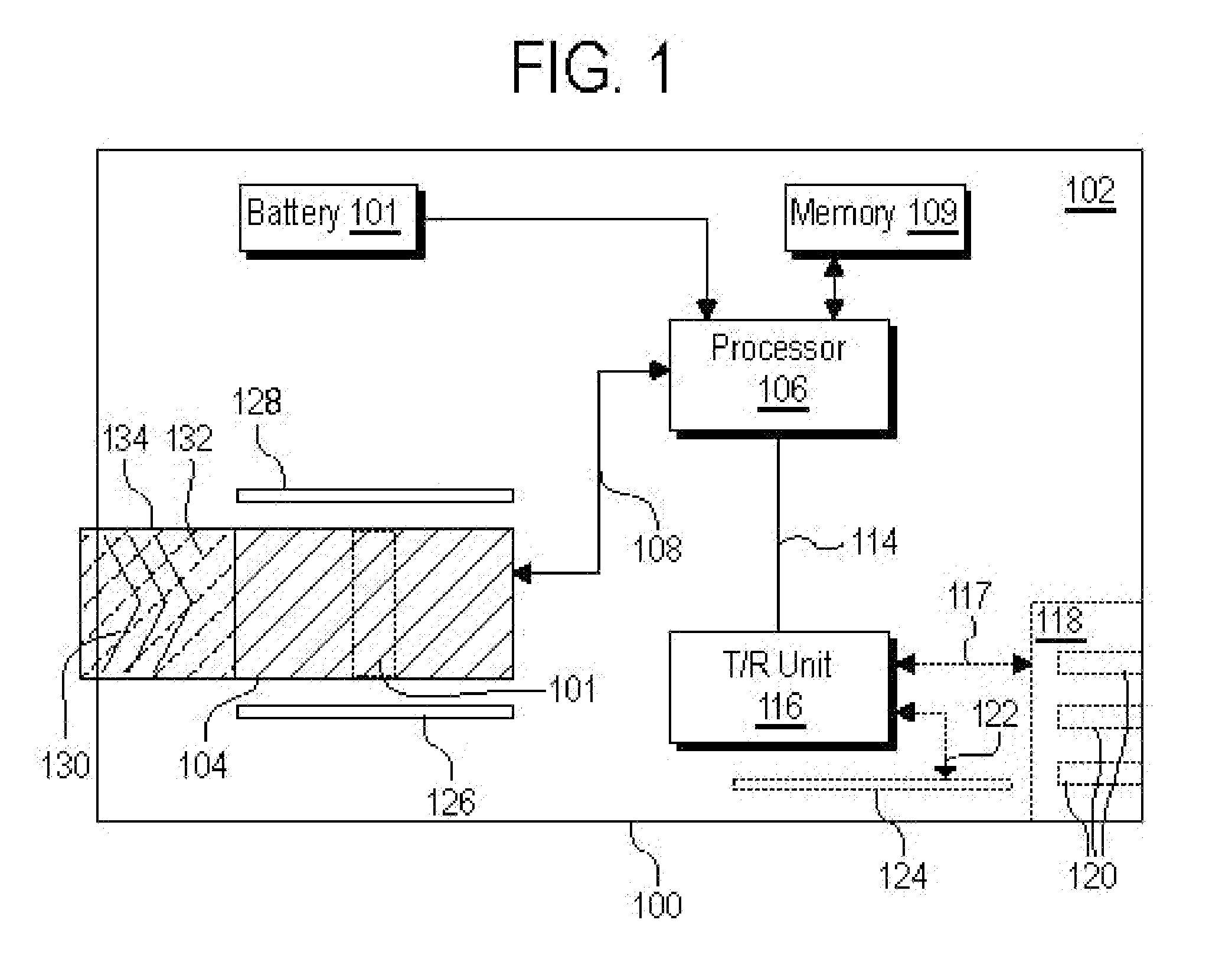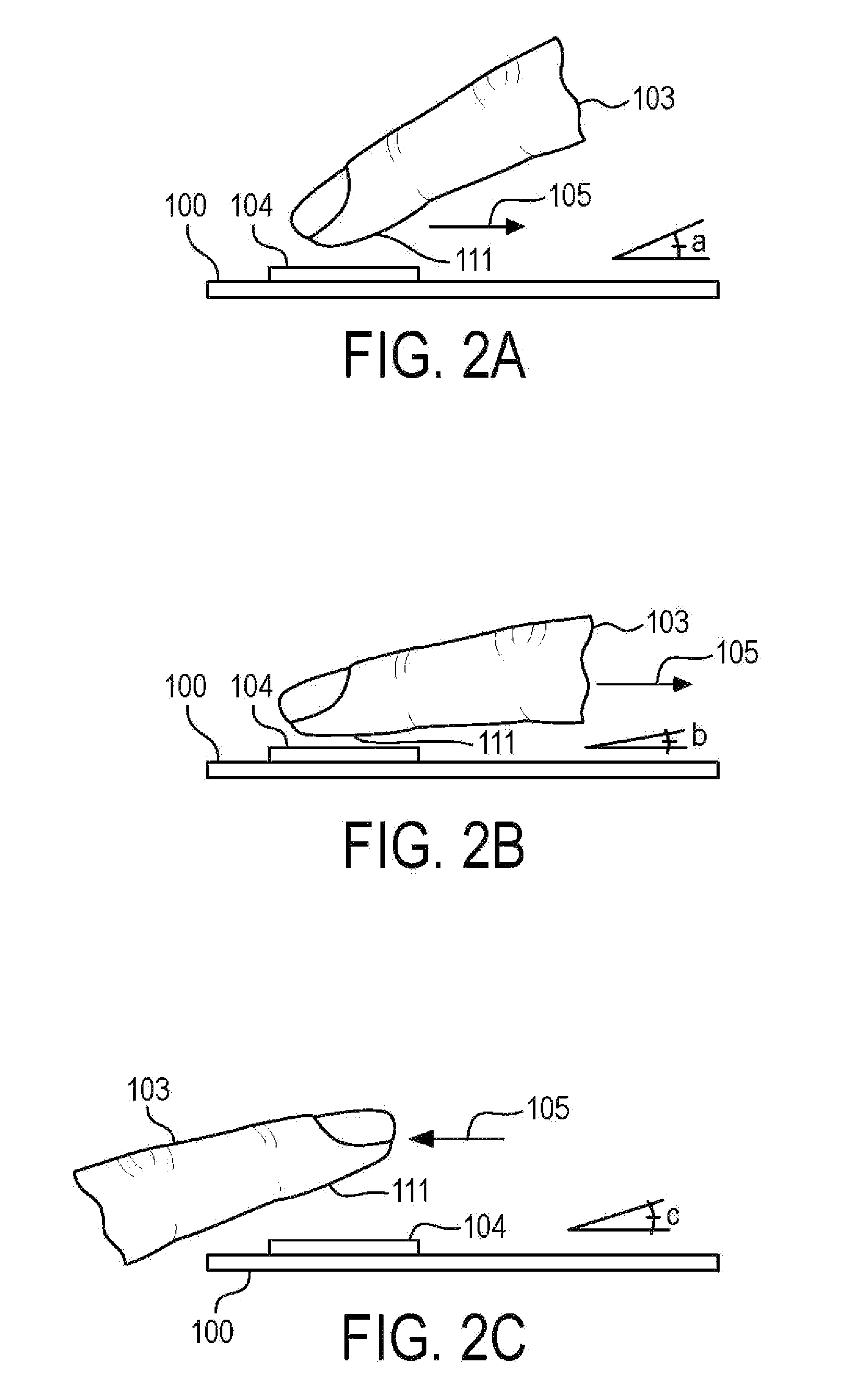Smart Card System With Ergonomic Fingerprint Sensor And Method of Using
a fingerprint sensor and ergonomic technology, applied in the field of smart card systems with ergonomic fingerprint sensors and methods of using, can solve the problems of low-cost devices, easy to misuse smart cards, and large size and cost of such sensors,
- Summary
- Abstract
- Description
- Claims
- Application Information
AI Technical Summary
Benefits of technology
Problems solved by technology
Method used
Image
Examples
Embodiment Construction
[0046]Although this invention can work with a wide variety of partial fingerprint sensors, in order to give specific example, much of the discussion will focus on deep finger penetrating radio frequency (RF) sensing technology, such as those manufactured by Validity Sensors, Inc. Thus to begin, this technology will be discussed in more detail.
[0047]Validity partial fingerprint sensors measure the intensity of electric fields conducted by finger ridges and valleys, such as deep finger penetrating radio frequency (RF) based sensing technology, and use this information to sense and create the fingerprint image. These devices create sensing elements by creating a linear array composed of many miniature excitation electrodes, spaced at a high density, such as a density of approximately 500 electrodes per inch. The tips of these electrodes are separated from a single sensing electrode by a small sensor gap. The electrodes are electrically excited in a progressive scan pattern and the ridg...
PUM
 Login to View More
Login to View More Abstract
Description
Claims
Application Information
 Login to View More
Login to View More - R&D
- Intellectual Property
- Life Sciences
- Materials
- Tech Scout
- Unparalleled Data Quality
- Higher Quality Content
- 60% Fewer Hallucinations
Browse by: Latest US Patents, China's latest patents, Technical Efficacy Thesaurus, Application Domain, Technology Topic, Popular Technical Reports.
© 2025 PatSnap. All rights reserved.Legal|Privacy policy|Modern Slavery Act Transparency Statement|Sitemap|About US| Contact US: help@patsnap.com



